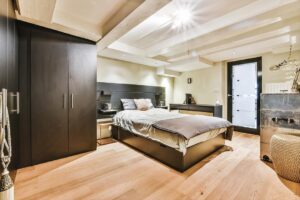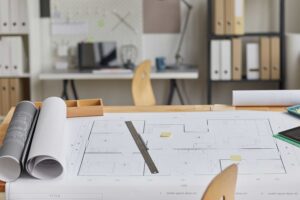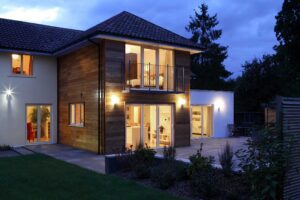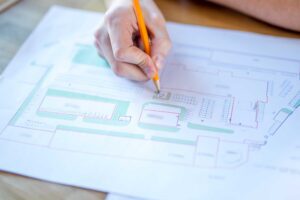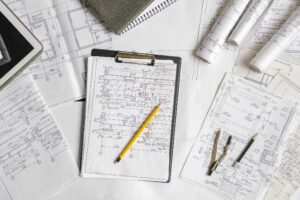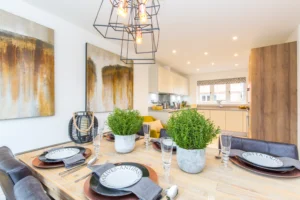Planning an extension, renovation, or new build is exciting. It’s a chance to create more space, improve the way your home works, and add long-term value. But alongside the excitement comes one of the most common stumbling blocks: money.
Far too often, budgets are treated as an afterthought. Homeowners fall in love with ideas, drawings, or Pinterest boards before discovering the reality of construction costs. This can lead to disappointment, redesigns, or even abandoned projects. Setting a realistic budget early, however, changes everything. It provides clarity, streamlines decision-making, and keeps the project firmly on track.
Why Costs Can Spiral Without a Budget
Building work is complex, with multiple moving parts: materials, labour, professional fees, and statutory costs such as planning applications and building control approvals. Without a clear financial framework in place, it’s easy for the project to snowball. Common issues include:
- Scope creep — adding new ideas halfway through without realising the knock-on cost.
- Underestimating finishes — high-end kitchens, glazing, or flooring can quickly push a project beyond expectations.
- Unclear drawings — vague information leaves builders guessing, often leading to variations and extra costs.
A realistic budget sets boundaries and ensures every decision is made with financial awareness.
Budget as a Design Tool
Some homeowners worry that discussing money too early will restrict their options. In reality, the opposite is true. A budget gives architects the parameters to design creatively within the right framework.
For example:
- If you want large expanses of glass but have a limited budget, your architect can suggest alternative glazing solutions that balance light and cost.
- If your budget is tight, they may recommend a phased approach — completing the essential work now while leaving scope for future upgrades.
- Smart material choices, efficient layouts, and careful structural decisions can all save money without compromising quality.
By knowing where the boundaries lie, design becomes more purposeful and efficient.
Preventing Stress on Site
One of the biggest causes of stress during construction is cost uncertainty. If drawings aren’t tied to a realistic budget, builders may price too low, miss items out, or add extras later. This often results in disputes or unexpected bills.
A well-prepared set of documents informed by your budget gives contractors confidence to price accurately. It reduces the risk of surprises and creates a smoother relationship between you and your builder.
The Importance of Comparing Like-for-Like
When homeowners request quotes without detailed specifications, the responses can vary wildly. One builder might price for basic finishes, while another assumes high-end materials. The numbers look different, but they’re not really comparable.
Establishing a budget upfront helps solve this. With clearer specifications, you can compare like-for-like quotes and choose a builder based on quality and value, not guesswork.
Factoring in the Hidden Costs
It’s easy to focus solely on bricks and mortar, but a realistic budget should also account for:
- Professional fees — architect, engineer, planning consultant, or surveyor
- Statutory fees — planning applications, building control, Party Wall agreements
- VAT — often overlooked, but a significant cost on most projects
- Contingency — typically 10–15% of the total to cover the unexpected
Considering these from the outset avoids last-minute financial shocks.
How This Saves Time
Budget clarity doesn’t just save stress — it saves weeks or even months of wasted time. Without it, projects often go through multiple redesigns as costs become apparent later. Each redesign means more meetings, more drawings, and more delays. With a realistic figure agreed early, the design process moves forward smoothly, avoiding unnecessary backtracking.
How Architects Can Help Shape a Realistic Budget
While no architect can provide an exact cost upfront — that’s ultimately the builder’s role — they can provide guidance based on experience. They can benchmark costs from similar projects, flag where ambitions might exceed resources, and suggest alternative approaches to bring designs back in line with your budget.
An architect’s role is not just about drawing your ideas but making sure they’re achievable. By helping to establish a realistic financial plan early, they give your project the best possible chance of success.
Final Thoughts
Setting a budget might feel like the less exciting side of a building project, but it’s the foundation that everything else rests upon. By establishing clear financial parameters at the beginning, you avoid unnecessary stress, wasted time, and spiralling costs. Instead, the focus can remain where it should be: on creating a home that works beautifully for you, within your means, and without unpleasant surprises along the way.



